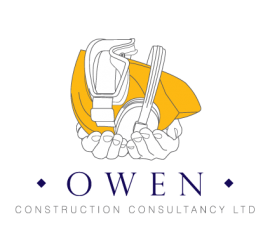Whenever we are working at height on the construction site, scaffolding becomes an important component. Not only while building but even when maintaining or wherever we need to work at height. Scaffolding is seen as a safe work platform, but some risks are inherited and cannot be ignored.
This blog discusses how the safety of those who work on and around scaffolds is paramount and should be taken care of at all times. We will discuss ten health and safety rules to consider for a safe work environment, especially in the context of scaffolding.
Are you looking for health and safety consultants to work with builders and developers for a safe construction site? We at Owen Construction Consultancy can help you with this. Connect with our experts on 01689 820105 or 07966 286770, and we will help you find the right consultant.
“Owen Construction Consultancy provides you with impeccable health and safety consultant services”
Our construction health and safety consultants are all very experienced – each has been working in the construction industry for more than 30 years. We are not a hands-off business; we believe our effective communication and fast response times to our instructions are what sets us apart.
Now let us explore the health and safety rules to consider for scaffolders:
1. Comprehensive Training and Certification
The first step in making any environment safe and secure is to give them knowledge and training. Every scaffolder should be fully trained and have proper certification before it starts working. For the UK, you must be certified and hold the Construction Industry Scaffolders Record Scheme card; this shows that the scaffolder has undergone proper training and knows how to react in case of emergency.
2. Regular and Rigours Inspections
Safety and regular check-ups go hand in hand. Scaffolding must be regularly inspected by a senior to ensure it is safe for use and not damaged from any side. These inspections should be properly documented and should be done by someone who holds an experience in similar inspection and can identify any potential risk.
3. Protective Equipment
Covid has made us understand the importance of wearing personal protective equipment {PPE}. Scaffolders should wear hard hats, non-slip shoes with steel toes, good quality gloves, and high-visibility clothes. PPE acts as an additional layer of protection from debris and reduces the risk of infectious diseases as well. Regular checks of PPE kits should also be done.
4. Adherence to Load Limits
Every scaffolder has a weight load limit, and the supervisor of the site should ensure that it is never crossed. Overloading the scaffolding can result in the breaking of the structure and can hurt the workers on and around the scaffolding. Scaffolders should be trained on how to distribute their weights evenly so that the scaffolder and scaffolding remain intact.
5. Stability and Security
Every Scaffold should be stable and securely placed. Before workers start using the scaffold construction, the supervisor should check the foundation and even the ground of the scaffolding. During the use, check that the fittings are correct, and that the method is as per the manufacturer and training.
6. Safe Access and Egress
Safe access is very crucial in any support or scaffolding. This is only possible if we have secured ladders, stair towers and other means to get down and get up in the scaffolding. Routes should be clear to complete the team, and emergency exits should be marked. The map and layout should be easily accessible to all.
7. Installation of Guardrails and Toeboards
The open sides of the scaffold are also very risky because any tool can fall off and hurt workers around the scaffolding. Guardrails and toe boards are needed to prevent falls from height, and they can also stop materials and tools from falling from the edge and hurting workers. It should be installed on the first day.
8. Clear Communication
Effective communication is very important to maintain safety. This includes using clear signage that will tell you safe working loads, entry points, and any other information or hazards. Keep radios and use hand signals as well to transfer information quickly, whereas verbal communication may take time or is ineffective.
9. Emergency Procedures
All scaffolding sites and places should have clear and transparent emergency procedures. These procedures should be regularly checked and updated to ensure smooth exit in case of any emergency. Regular drills and training should be given to workers. They should understand how to exit and react in an emergency without creating panic or mess.
10. Regular Health Check-ups
Regular workers’ health check-ups ensure that all of them are fit for work. Scaffolding requires high endurance and physical strength to work and has a risk of muscle or broken bone in case of an accident. Health check-up helps identify spots early, and after that, treatment is given.
How We Can Help
Owen Construction Consultancy is entirely client-focused and creates personalised plans for all our clients. We are proud to have long-standing repeat business with clients across a wide range of industries. Our team has more than 30 years of experience, and we believe in keeping the process transparent.
We can provide a safe and secure environment on the construction site, reducing the risk and possible dangers.
We offer a wide range of services in health and safety consultancy, such as health and safety for architects, health and safety for builders, construction risk assessment and method statements, clerk of works, and party wall services.
Conclusion
Scaffolding is a safe place, but it will become even safer if you follow these ten rules. The goal is to eliminate any potential danger and risk so that workers can work without being unsure and afraid. These steps will give them confidence and faith so that they can complete work more efficiently and effectively.
May 22, 2024
